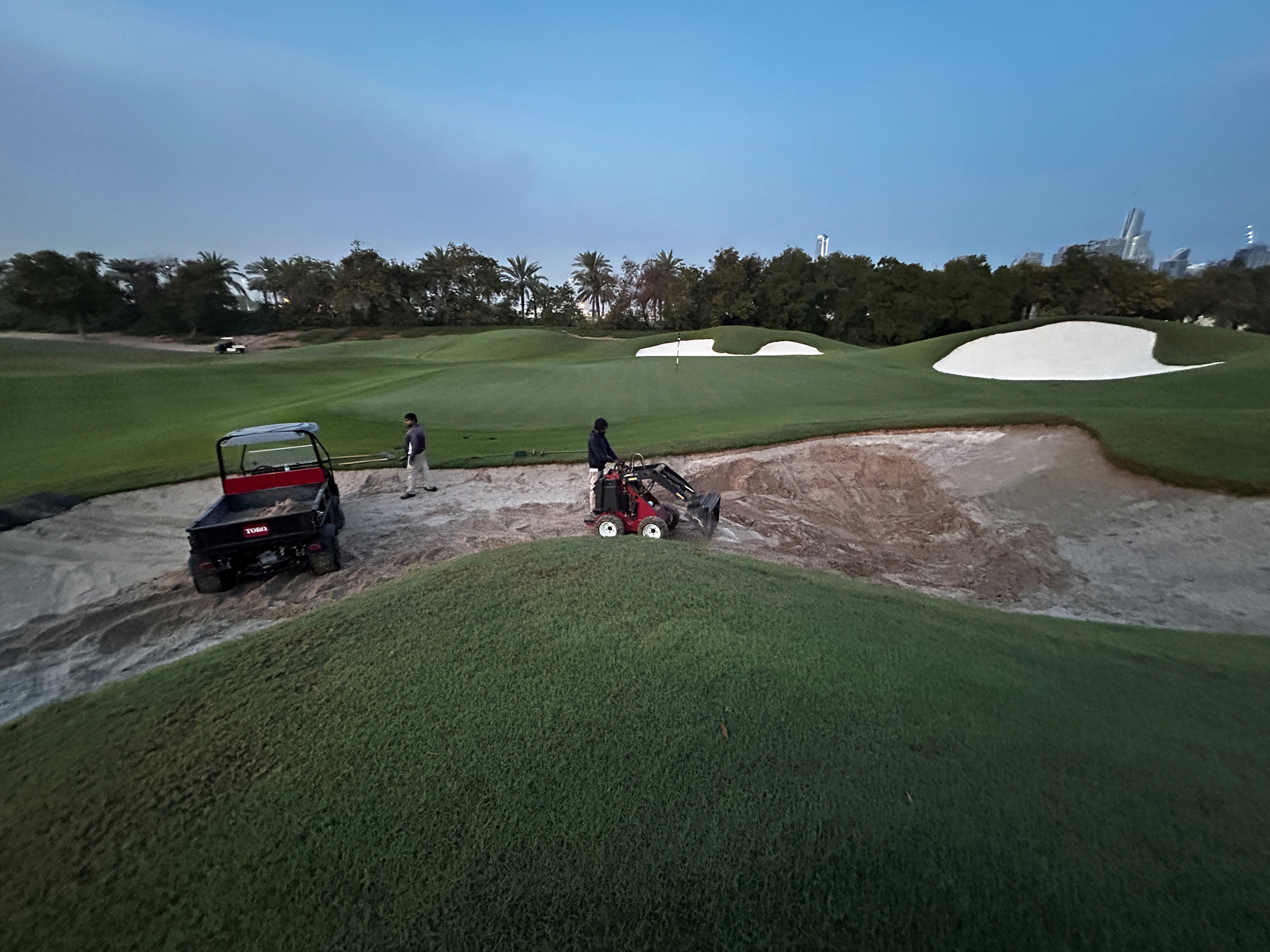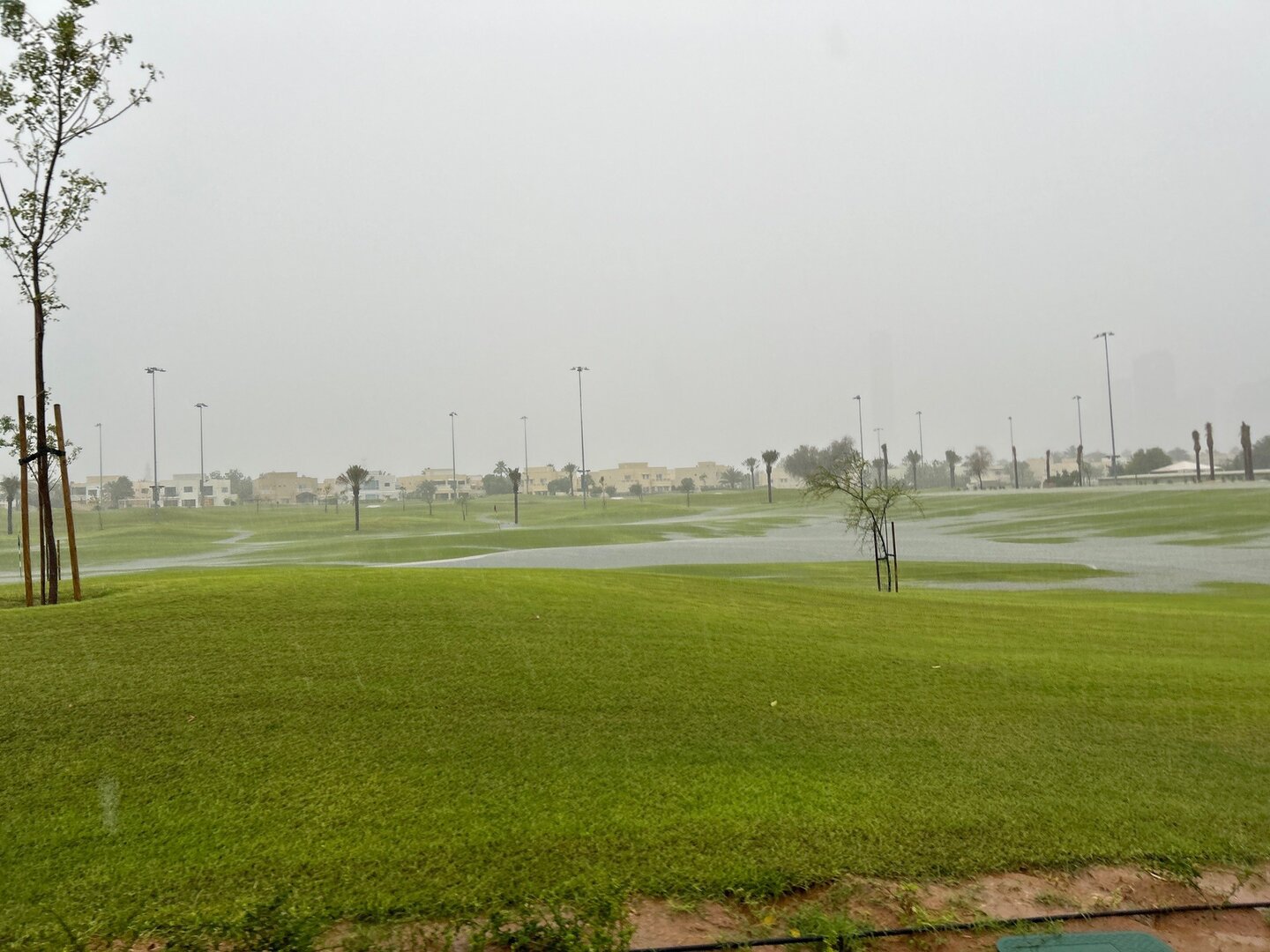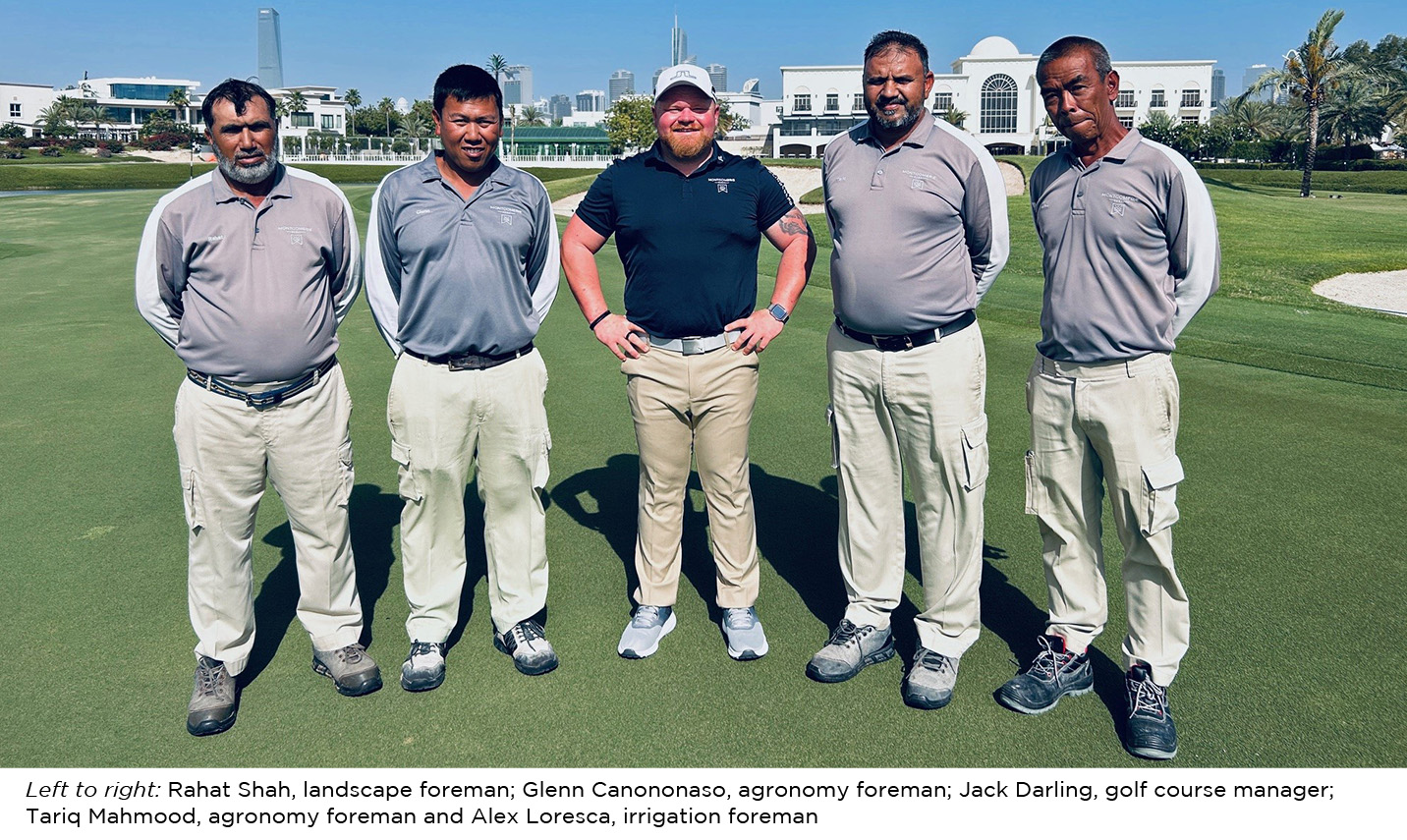Nestled amid the vibrant cityscape of Dubai, the Montgomerie Golf Course stands as a testimony to nature's beauty and human ingenuity. As players make their way through the course, they are treated to breathtaking views of the Dubai skyline, a reminder of the city's ever-present energy and vitality. But there is a sense of serenity to be found on Montgomerie's fairways – a chance to escape the chaos and connect with nature.
This tranquility was shattered on 16 April as Dubai experienced its worst storm in 75 years. Rain, hail and winds lashed the city for 24 hours, leaving a chaotic, flooded Dubai in its wake.
I had the chance to chat with Montgomerie’s golf course manager, Jack Darling, about how they handled the aftermath of the storm...



Have you ever experienced a storm like that before?
Coming from the north of Scotland we experience heavy rain most of the year, but nothing could prepare you for the magnitude of what we received over the 24 hours in April. Totalling over 50mm of rain in such a short space of time was unimaginable, especially with the high wind speeds. It was something I had never even imagined I would see in the Middle East.
What immediate measures were put in place to save the course?
First and foremost was the safety of all the agronomy associates – making sure everyone was safely off the golf course and transportation was available to get them home. After this, we just had to let Mother Nature take its course and assess the situation once the worst of the storm had passed. Preventative measures to safeguard the irrigation pump station were shown to be vital. We had also already planned preventative measures for drainage outlets and submersible pumps before the storm, which certainly helped. Additionally, adding sandbags around the agronomy facility to try to stop the flow of water getting into the offices and machinery stores was a high priority as everything we require must be in working order to resolve such a situation.


How did the mop-up operations start, what was the plan?
The day after the storm we assessed the course and produced a high-priority plan. I’d say 75% of our turf was in good condition, with large accumulations of water, debris and sand covering cart paths, areas of rough accessing the fairways and some tee boxes. Bunkers were heavily damaged with large areas of faces washed out and edges collapsing. Many trees had also collapsed and large branches were blocking cart paths. With transportation to the driving range and practice facilities limited due to the flooding of the tunnel, we started pumping water so if anything, we could have our practice facilities open. Our plan was that if we could clear all debris and remove water from areas we could potentially have the course back in play fairly quickly, minus bunkers. So we proceeded with our initial plan of three teams removing sand/silt from cart paths, removing fallen trees blocking main traffic areas and pumping water from any low-lying areas around the property. With such a scale of work and ranging in aspects it was vital we adhered to Troon International health and safety standard operating procedures to ensure every associate was taking every precaution when carrying out their work.
Is there an ongoing plan to get the course back to being 100%?
After something as significant as this, being back to 100% takes time. We still have many landscape jobs to be carried out in the surrounding areas but on the course, I feel we are at 95% back to where we were before the storm.


Having played the course two weeks ago, I was amazed to find very little evidence of the storm. Did the golf clubs talk to one another? Was there a network of help created?
That is testimony to the hard work and dedication of the agronomy team. Everyone knew the monumental task ahead of us and was fully committed to making the course shine once again as quickly as possible. When you work on a golf course it’s your pride and joy, and with that comes grit and determination to make sure it’s at its peak 24/7. Being within a cluster of clubs within the Emaar Hospitality Group, I heavily liaised with our director of agronomy, Jordan Fairweather, who helped ensure that between all three clubs, we were maximising our resources to make sure each club was making progress.
Lastly, off the subject of the storm, as a South African, what message can you give our readers on golf in Dubai? Is it a great golf destination in your opinion?
Golf in the Middle East is growing each year. The standard of golf courses in the region is at its peak with every facility offering a different dynamic when it comes to playing. I think seeing the massive surge in golf in the past two years not only comes from the course but also from what the facility offers overall. Programmes such as Club 59 also reward facilities for their excellence, driving standards higher. It’s important to note that the guest experience and level of service received on golf courses in the Middle East is only comparable to high-end hotels and some of the best in the world. It is one of the top destinations for golf worldwide and in my opinion, will only grow year on year as the standards set across the region get higher.

Gallery below
SUPPLIED/MONGOMERIE GOLF COURSE







